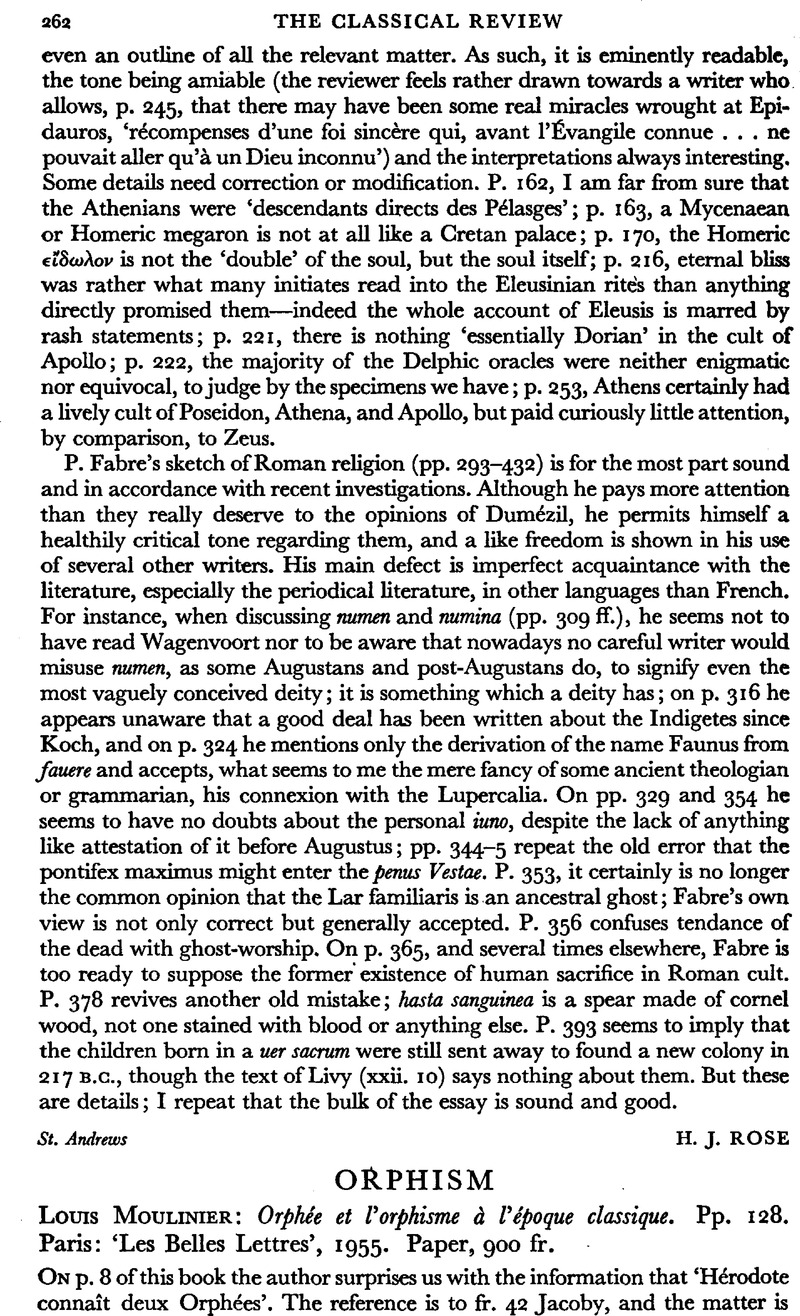No CrossRef data available.
Article contents
Orphism - Louis Moulinier: Orphée et l'orphisme ὰ l'époque classique. Pp. 128. Paris: ‘Les Belles Lettres’, 1955. Paper, 900 fr.
Published online by Cambridge University Press: 13 February 2009
Abstract

- Type
- Reviews
- Information
- Copyright
- Copyright © The Classical Association 1956
References
page 263 note 1 I made the same mistake twenty years ago in Orpheus and Greek Religion. It was pointed out by Ch. Picard in 1936 and corrected in a note in the second printing.
page 264 note 1 Metzger, , Les représentations dans le céramique attique du IVe siècle (1951), p. 262, n. 3.Google Scholar The vase is illustrated in Guthrie, Orph. and Gk. Rel. (1935 and 1952), p. 131.
page 264 note 2 For vases showing Lycurgus killing Dryas, see Beazley, , Greek Vases in Poland (1928), pp. 44–46Google Scholar. The first vase mentioned above has been published in C.V.A. Cracow, pl. 12. 1. For the second, see Cultrera, ‘Hydria a figure rosse del Museo di Villa Giulia’ (Opere d'Arte, fasc. viii, 1938). I owe these references, as well as the explanation of his own views, to the kindness of Sir John Beazley, who also states that the second vase is Attic, not Italiote as Cultrera says.




